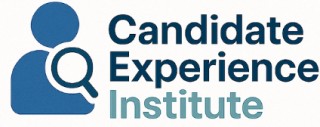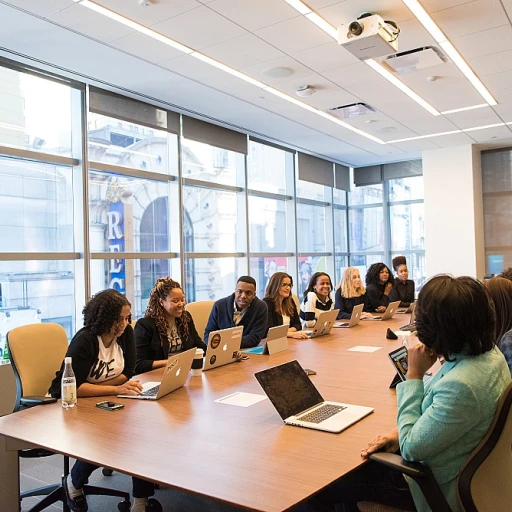
Understanding the Employee Experience Manager's Role
The Essence of Understanding the Leader's Role
In today's evolving workplace, the role of an Employee Experience Manager is crucial for fostering a positive work environment and enhancing the overall employee journey. Tasked with overseeing the employee life cycle from recruitment to onboarding and beyond, these managers are central to cultivating a culture where employees feel engaged and valued. An effective experience manager brings together various elements such as communication, feedback, and employee development. Through consistent management and support, they help shape a company culture that prioritizes employee engagement and satisfaction. Their ability to understand and align the needs of employees with organizational goals is vital for maintaining an engaging work environment. Experience managers must navigate the challenges of improving employee experiences, which can have a profound impact on retention and the successful onboarding of new hires. The integration of best practices in employee management facilitates this, encouraging a seamless employee journey and contributing to the overall success of the company. By focusing on enhancing the positive employee experience, managers play a pivotal role in the organization's success. They ensure that the workplace culture not only attracts top talent but also encourages employees to stay and thrive. To dive deeper into the intricacies of this role and its impact on company culture, consider exploring related resources such as understanding the concept of a backfill position here.Key Challenges in Candidate Experience
Identifying Obstacles in the Candidate Journey
In the realm of candidate experience, organizations face several challenges that can hinder the recruitment process and impact the overall perception of the company. Understanding these obstacles is crucial for experience managers aiming to create a seamless and positive journey for potential employees.
Communication Breakdowns
One of the most significant challenges is communication. Candidates often report feeling left in the dark during the recruitment process. This lack of communication can lead to disengagement and a negative view of the company culture. Ensuring clear, consistent, and timely communication is essential to keep candidates informed and engaged.
Complex Application Processes
Another hurdle is the complexity of application processes. Lengthy and complicated forms can deter top talent from completing their applications. Simplifying these processes and ensuring they are user-friendly can significantly improve the candidate experience.
Feedback and Transparency
Feedback is a critical component of the candidate experience. Many candidates express frustration over the lack of feedback after interviews. Providing constructive feedback, whether positive or negative, helps candidates understand their strengths and areas for development, fostering a more positive employee journey.
Onboarding and Integration
The onboarding process is another area where challenges arise. A poorly executed onboarding can lead to a negative first impression, affecting employee engagement and retention. Experience managers must ensure that the onboarding process is smooth and welcoming, integrating new hires effectively into the work environment.
Understanding the Concept of Backfilling a Position
Additionally, the challenge of backfilling positions can complicate the candidate experience. When an employee leaves, the rush to fill the vacancy can lead to a hurried and less thorough recruitment process. Understanding the concept of backfilling a position can help managers plan better and maintain a positive experience for all candidates involved. For more insights, you can explore this resource on backfilling positions.
By addressing these challenges, companies can enhance their candidate experience, ultimately attracting and retaining top talent while fostering a positive company culture.
Strategies for Improving Candidate Experience
Implementing Effective Communication Channels
To significantly enhance the candidate experience, organizations must foster effective communication throughout the entire recruitment journey. Open and transparent communication allows candidates to feel valued and informed at every stage of the process. Providing clear information about job roles and expectations not only prepares candidates but also aligns them with the company's values and culture. Equipping managers with the tools and training for consistent communication can bridge any gaps that might arise during the hiring process.
Crafting a Positive Onboarding Process
An exceptional candidate experience transitions smoothly into a seamless onboarding process. This phase is crucial as it sets the tone for the employee's entire lifecycle within the organization. A comprehensive onboarding plan can significantly improve employee engagement, fostering a sense of belonging from day one. Effective onboarding focuses on introducing new hires to the company culture, providing the necessary tools for success, and nurturing open lines of communication to gather feedback.
Embracing Company Culture and Values
Aligning candidate experience strategies with the organization's culture and values can create a lasting impact on new employees. It's essential for experience managers to integrate company values into every aspect of the hiring process, from job descriptions to interviews. By doing so, they ensure candidates have a realistic understanding of the workplace environment they might join. This alignment leads to better cultural fit, reducing turnover and enhancing overall employee experiences.
Utilizing Feedback for Continuous Improvement
Regularly gathering and analyzing candidate feedback is a powerful way to refine recruitment processes. Feedback mechanisms help experience managers identify areas of strength and opportunities for improvement. By actively listening to candidates and making necessary adjustments, organizations can enhance their appeal to top talent. Establishing a feedback loop not only improves individual experiences but also contributes to the organization's broader objectives of attracting and retaining skilled employees.
More insights on navigating the complexities of candidate experience can be accessed in guides such as this detailed guide on career opportunities.
The Impact of Technology on Candidate Experience
Embracing Technological Advancements
Technology has become a crucial component in reshaping the candidate experience within an organization. It is essential for experience managers to understand how these advancements can enhance the overall journey for potential employees. Leveraging tools like Applicant Tracking Systems (ATS) and AI-driven analytics not only streamlines the recruitment process but also helps in assessing the quality of candidates efficiently. By utilizing technology, companies can foster a more engaging and interactive environment during the recruitment phase. Virtual reality and augmented reality can provide immersive previews of the workplace culture and environment, giving candidates a positive sense of what it would be like to become part of the team.Crafting Seamless Communication Channels
Ensuring open and effective communication is indispensable in creating a positive experience for job candidates. Automation tools can be employed to maintain an efficient communication line, delivering timely updates and feedback without losing the personal touch. This form of proper management in communication aids candidates in feeling valued and informed throughout their journey, reinforcing a positive sentiment towards the company.Integrating Feedback Mechanisms
Feedback mechanisms powered by technology allow for the collection of real-time insights from candidates. Experience managers can analyze this data to understand specific pain points within the recruitment cycle. By addressing these issues, organizations can refine their strategies and promote a culture of continuous improvement. Technology also presents an opportunity for onboarding processes to be more interactive and engaging. Digital onboarding platforms can facilitate a smooth transition for new hires, cultivating employee engagement from the onset. As a result, employees feel better integrated into the company culture, setting the stage for higher retention and job satisfaction.Ensuring an Engaging Work Environment
A tech-driven approach can play a significant role in creating a cohesive and engaging work environment. Experience managers can leverage tools to foster communication and collaboration among employees, enhancing their overall satisfaction and productivity. Such advancements contribute to the long-term success of the organization by not only attracting top talent but also retaining it in the ever-evolving workplace landscape.Measuring Success in Candidate Experience
Evaluating the Effectiveness of Candidate Experiences
Effectively measuring success in candidate experience is crucial for organizations aiming to attract and retain top talent. As competition for skilled employees increases, providing a positive candidate journey becomes an essential part of an organization’s overall employee experience strategy. To gauge how well your company is performing in this area, consider the following key performance indicators:- Candidate Net Promoter Score (NPS): This metric helps to assess candidate satisfaction and whether they would recommend your company to other potential candidates. A high NPS indicates a positive candidate experience and reflects well on the company's culture and brand.
- Candidate Feedback Surveys: Allow candidates to provide feedback on their experience throughout the recruitment process. Collecting this data offers insights into areas for improvement and helps identify pain points.
- Time-to-Fill: Monitor the average time taken to fill a position. A shorter time frame often signals a well-managed candidate experience, leading to quicker hiring decisions and providing a more efficient onboarding process.
- Quality of Hire: Evaluate the performance and engagement levels of new hires. A positive candidate experience should result in new employees who are better aligned with the company culture and contribute positively to the work environment.
- Candidate Drop-Off Rates: Track the number of candidates who disengage or drop out of the application process. High drop-off rates may indicate issues within the recruitment process or an ineffective communication strategy.













